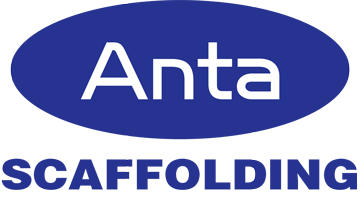Cuplock Scaffolding Vs H-Frame: Which Is More Cost-Effective?
Choosing the right scaffolding system is crucial for any construction project. Two popular options in the construction industry are Cuplock scaffolding and H-Frame scaffolding. Both have their advantages and disadvantages, but one of the most critical factors to consider is cost-effectiveness. In this article, we will compare Cuplock scaffolding and H-Frame scaffolding in terms of cost-effectiveness to help you make an informed decision for your next project.
Cuplock Scaffolding

Cuplock scaffolding is a modular system known for its ease of assembly and versatility. It consists of vertical standards with cups at regular intervals where horizontal ledgers can be attached. The unique locking mechanism requires only a hammer to secure the connections, making it quick to set up and dismantle. Cuplock scaffolding is also known for its high load-bearing capacity, which is ideal for supporting heavy loads on construction sites.
One of the main advantages of Cuplock scaffolding is its cost-effectiveness. While the initial investment may be higher than other scaffolding systems, such as H-Frame, the versatility and reusability of Cuplock scaffolding make it a cost-effective option in the long run. The ease of assembly and dismantling also reduce labor costs, saving time and money on the construction site.
Cuplock scaffolding is also highly adjustable, allowing for various configurations to accommodate different project needs. The system's flexibility means it can be used for both simple and complex structures, making it a versatile choice for construction projects of all sizes. Additionally, the standardized components of Cuplock scaffolding make it easy to transport and store, further reducing costs associated with logistics and storage.
H-Frame Scaffolding
H-Frame scaffolding, also known as frame scaffolding, is a traditional system consisting of vertical frames connected by horizontal and diagonal braces. The simple design of H-Frame scaffolding makes it easy to assemble and dismantle, requiring minimal tools and expertise. H-Frame scaffolding is popular for its stability and durability, making it a reliable choice for a wide range of construction projects.
While H-Frame scaffolding is known for its affordability, it may not always be the most cost-effective option in the long term. The simplicity of the system means it may not be as versatile or reusable as other scaffolding systems like Cuplock. H-Frame scaffolding may require additional components or modifications to fit specific project requirements, leading to higher costs over time.
One of the main advantages of H-Frame scaffolding is its durability and stability, making it a safe choice for supporting workers and materials on construction sites. The sturdy construction of H-Frame scaffolding can withstand heavy loads and adverse weather conditions, ensuring the safety of workers and the success of the project. Additionally, the straightforward design of H-Frame scaffolding means it can be easily inspected for safety compliance, reducing the risk of accidents on site.
Comparison of Cost-Effectiveness
When comparing Cuplock scaffolding and H-Frame scaffolding in terms of cost-effectiveness, several factors must be considered. While the initial investment in Cuplock scaffolding may be higher, its versatility, reusability, and ease of assembly can result in long-term cost savings. Cuplock scaffolding's ability to adapt to different project needs and its high load-bearing capacity make it a cost-effective option for construction projects of all sizes.
On the other hand, H-Frame scaffolding's affordability and simplicity make it an attractive option for budget-conscious projects. However, the lack of versatility and reusability of H-Frame scaffolding may lead to higher costs in the long run, especially for complex or large-scale projects. It is essential to consider the specific requirements of your project and weigh the long-term cost implications before deciding on a scaffolding system.
Conclusion
In conclusion, both Cuplock scaffolding and H-Frame scaffolding have their advantages and disadvantages in terms of cost-effectiveness. Cuplock scaffolding offers versatility, reusability, and high load-bearing capacity, making it a cost-effective option for a wide range of construction projects. On the other hand, H-Frame scaffolding is affordable and durable but may not be as versatile or reusable, potentially leading to higher costs over time.
Ultimately, the choice between Cuplock scaffolding and H-Frame scaffolding will depend on the specific requirements of your project, budget constraints, and long-term cost considerations. It is essential to carefully evaluate the pros and cons of each scaffolding system and choose the option that best suits your needs. By making an informed decision, you can ensure the success and cost-effectiveness of your construction project.

